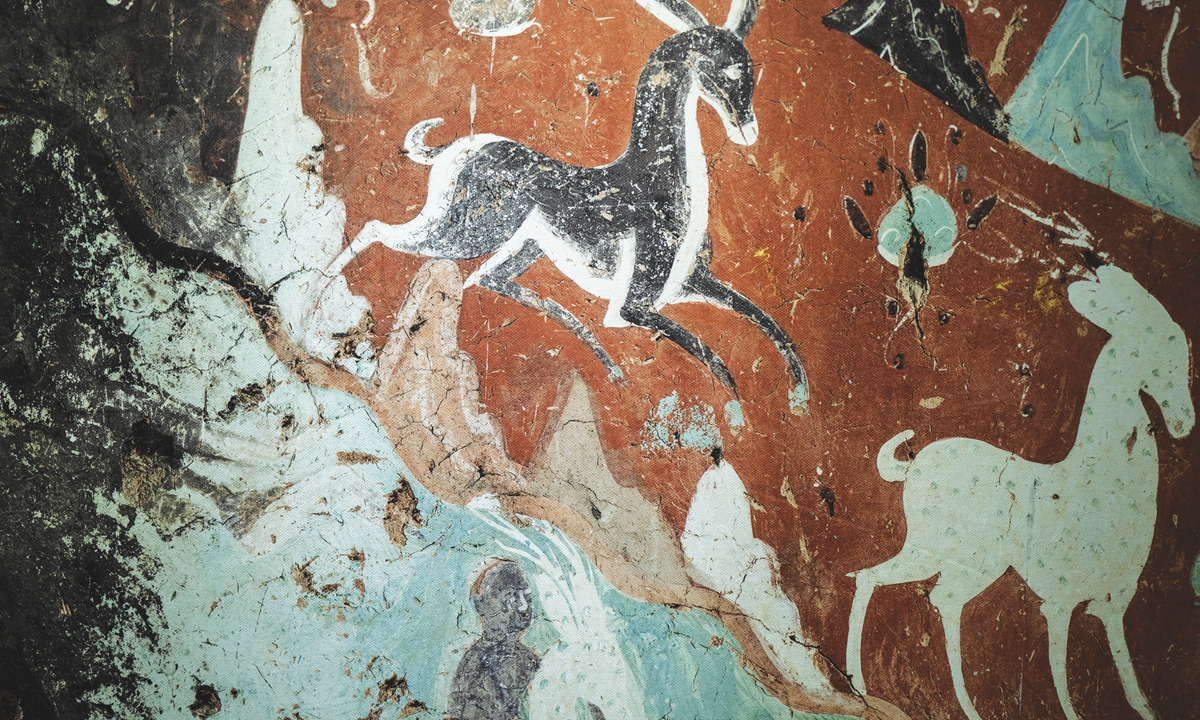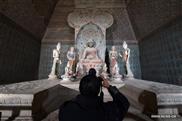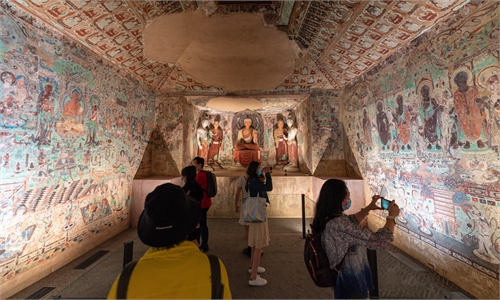ARTS / ART
Vlogger's video shooting misbehavior inside UNESCO grottoes triggers anger

The Nine-Colored Deer painting in the Mogao Caves in Dunhuang, Gansu Province Photo: IC
Recently, a vlogger shot a video of the frescoes at the Mogao Caves in Dunhuang, Northwest China's Gansu Province, despite regulations prohibiting photography. He later posted the video online, stirring up great concern for the artworks from Chinese netizens.
Many criticized him for risking damage to the cultural relics, while the administers at the World Heritage Site said that it would investigate the situation and take appropriate legal action.
On the vlogger's homepage is a 43-second video that appears to have been shot inside one of the grottoes at the Mogao Caves. When some netizens spotted the video, they were outraged and the video soon racked up more than 500 comments such as: "The tourist administration has reiterated numerous times that no photos can be taken inside the grottoes."
According to reports, the Dunhuang tourist administration responded, saying: "We will strengthen security patrols and investigate the content of the video. If this case proves serious, the vlogger should be punished by the law."
It also stressed that "photography is absolutely prohibited in the caves, even with the flash turned off."
Most visitors thought that the "no photos" rule was to prevent the bright light from flash photography from causing the color to fade. Outlet New Weekly reported that "using flash to take pictures in museums is in fact no different from pouring sulfuric acid on these great paintings."
However, according to Wang Xudong, then vice executive director of the Dunhuang Academy, the rule is more about controlling visitor traffic. Since there is very little space in the grottoes, if large crowds of tourists stay in the same space for too long, this can generate a large amount of carbon dioxide, which can speed up the decay of the pigment on the frescoes.
From 304 to 1368, the caves and grottoes at the site were expanded, each one of them home to numerous works of Buddhist art. A treasure house of ancient art, the site boasts 735 grottoes containing a total of 45,000 square meters of frescoes and 2,400 painted sculptures. It is also an important witness to the cultural exchanges that took place along the ancient Silk Road. In 1987, it was inscribed onto UNESCO's World Heritage List.
Global Times


